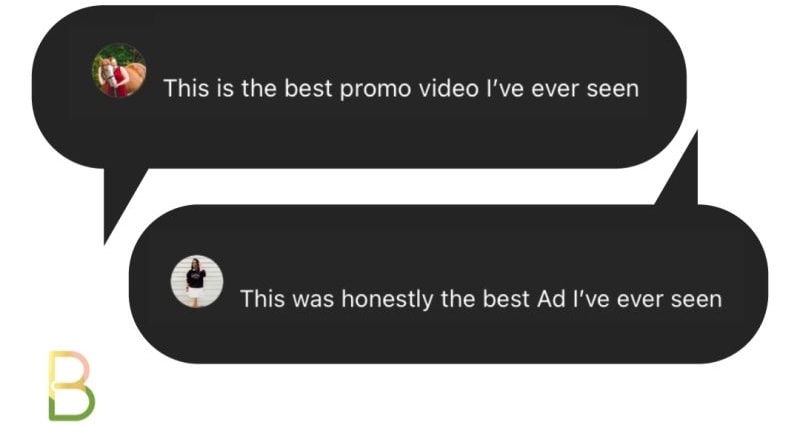Bold Brand Ideas: Brands like Unilever and Coke double down on TikTok, despite potential ban
As the potential TikTok ban in the U.S. looms on the horizon, brands are faced with a dilemma: continue investing in the platform – a powerful tool for driving sales and engagement – or hedge their bets and diversify spend across social media platforms. Despite the uncertainty, many brands, including Coca-Cola, e.l.f. Beauty, and Benefit Cosmetics, have doubled down on TikTok’s e-commerce platform, TikTok Shop. These brands have leveraged TikTok-exclusive product launches, affiliate creators and platform-hosted sales events to generate buzz and drive sales directly within the app.
The success stories are compelling. Benefit’s collaboration with Scrub Daddy sold out in less than a week, largely due to a combination of creator partnerships and shoppable livestreams. Coca-Cola’s limited-edition “Happy Tears” soda disappeared from virtual shelves within hours of its release, thanks to a well-orchestrated campaign featuring TikTok creators. E.l.f. Beauty’s “Super Brand Day” campaign, centered around its new Power Grip setting spray, generated nearly 50 million impressions and propelled the product to the top of the brand’s sales charts.
Unilever has spoken out in support of the app, saying it’s a platform where brands can interact with consumers through trendjacking, testimonials and organic activity. Unilever’s brand, Vaseline, credits TikTok for its discovery and rediscovery among its target audience.
Still, brands should proceed with caution. The potential ban serves as a reminder that relying too heavily on a single platform can be risky. It underscores the need to have a multi-channel strategy. If your eggs are all in TikTok’s basket, move them around. Look at the demographics of your followers on TikTok and determine where else they’re spending time. Diversify your channels and create multiple touchpoints with your target audience to better weather potential disruptions.
If you’re partnering with influencers, prioritize creators who have presences and credibility on multiple channels. Add flexibility into your contracts of where assets are published. For example, if video is a top priority (it probably is), discuss the potential of creating Reels instead of TikTok content, should the ban take place. Head of Services, Megumi Robinson, recently shared more with Digiday.
How else is your team preparing for a ban? Do you think it’s likely to happen?
Industry Insights: Megan Thee Stallion agrees: Avoid scripted influencer campaigns
During our AMA on influencer marketing, a brand manager asked: “How do you handle scripting? It feels like a fine line between getting info out and allowing for creativity.”
If Megan Thee Stallion was on our panel, we imagine she would have responded: ditch the script and stay true to you. During Social Media Week, she discouraged creators from becoming a walking commercial.
If you’re hoping for a #HotGirlSummer, take a page from Megan Thee Stallion’s book.
At Belle, we take an edutainment approach – one where we’re providing value multiple times before making an ask. We believe influencers can and should create content that educates, informs, inspires and empowers. Their content should nurture relationships before selling.
The beauty and power of influencers lie in their connections to niche communities. They share similar interests, hobbies, even hardships with their audience. This like-minded lifestyle creates an unparalleled level of understanding and trust that equates to relevant, engaging content.
Lean into that authenticity, and let influencers do what they do best: create.
Our team equips influencer partners with the tools they need to create great content, but ultimately, remember that we hired them because of their creativity and expertise. Consider influencers a business partner with valuable insights at their disposal. Influencers (and social) are rich sources of cultural, category + customer truths that can inform relevant campaigns.
Remember: creators know their audience and platforms best – listen to their content recommendations. When content feels hyper-controlled or forced, it won’t resonate, nor will it have the third-party credibility you hope it does.
That said, you want to onboard influencers with campaign briefs that include creative guardrails. Be clear on goals and key messages so influencers can incorporate that direction into their posts. In fact, we find that influencers do want some level of direction and hope to give their audience as much information as possible.
Below is an example of how we introduce direction + ideas for content structure to leave the door open for creativity.

An important caveat: if you feel like you have to micromanage a partner to put out content you can stand behind, you might not be working with the right partner, or you might need to reevaluate your reasoning behind wanting to execute an influencer campaign.
Interested in what other influencer marketing tea was spilled at our recent AMA webinar? We recorded and transcribed just for you.
Goals: Are influencer marketing platforms right for your content goals?
Self-serve influencer marketing platforms result in low(er) quality content. I know that might sound biased – coming from an influencer marketing agency – but it’s something I’ve heard from several Fortune 500 companies who have tested the platforms.
Still, self-serve platforms are gaining popularity amidst cut budgets and shrinking teams for their convenience + accessibility. The tech allows brands to manage and scale influencer campaigns – from influencer identification to contracts, content and payment – without agency support and/or when teams are lean.
On traditional self-serve platforms, brands post creative briefs with campaign requirements, budget and other details. Influencers on the platform can review and respond if interested. Partnership requirements and content are often templated due to the automation of the tools. While self-serve platforms help streamline steps, their outputs often fall short.
Influencer campaigns can drive awareness, nurture affinity and even drive sales – but that takes an intentional approach. While we use tools to expedite influencer research, we do additional scrubbing to ensure brand fit and value alignment. We like to say influencer vetting is a science (tech) and an art (our personal touch).
The biggest drawback is the lack of collaboration on the platforms. The campaigns become very transactional and lack the qualities of strategic partnerships, such as authenticity, mutual trust and creativity. Content that comes from self-serve platforms often forgo the Cardinal Rule: provide value five times before making an ask. We’ve all seen the overly-posed, product-hero post that is clearly an ad.
We prioritize phone calls with our influencer partners to ideate content that will resonate. Yes, AI tools can help prompt ideas, but we’ve found that strategist-and-influencer collaboration is key for high-performing content. More specifically, we strive to collaborate on authentic storytelling and “edutainment” content – content that educates, entertains and joins community conversations. Edutainment is rooted in micro-moments (see above).
This on-the-pulse approach requires frequent conversations and brainstorming with influencer partners to understand what’s trending and relevant to their audience. It’s incredibly hard to achieve this level of value through self-serve platforms.
Check out these comments we’ve seen on clients’ influencer posts:

Let me be clear: influencer tools and tech have a time and place. For example, we use Tagger to help automate influencer research, measurement and reporting. It’s the middle area that requires a human touch: vetting influencers for brand fit; conceptualizing content ideas tied to culture, category and customer truths; relationship building that leads to brand ambassadors + genuine fans (the gold star of influencer campaigns). These are elements that automation is challenged to replicate.
The ANA’s Influencer Pay Equity Guide also cautions that self-serve platforms don’t always disclose an influencer’s compensation because of the platforms’ fee structures. They advise getting clarity upfront on payment protocols when making pay transparency and equity a priority.
Self-serve platforms may be cost-effective ways to amass a quantity of content, but they’re not always the solution for loyalty-building, ROI-driving campaigns.
We want to hear: How are you using AI to automate your processes? How are you prioritizing influencers in a flat-budget year?
DEI Download: How to avoid AI Biases when using GenerativeAI tools
It’s no secret GenerativeAI tools like ChatGPT and Perplexity are taking the marketing industry by storm – and with good reason – as they support more efficient, insight-driven, creative and scalable workflows. However, it’s important to understand the caveats that come with using AI tools, especially the inherent biases that exist within these tools.
For example, Bloomberg found that the text-to-image AI tool Stable Diffusion took “racial and gender disparities to extremes – worse than found in the real world.” The issue arises not from the tools themselves but from the datasets they’re trained on, and this is where the biases often stem from. Sasha Lucchoni, a research scientist at AI startup Hugging Face, warns in the Bloomberg article, “we are essentially projecting a single worldview out into the world, instead of representing diverse kinds of cultures or visual identities.”
Still, it’s important to acknowledge the power and potential of these tools. By eliminating admin or tedious tasks, they create space for big thinking and outside-the-box strategies. That said, we have a responsibility to take proactive steps to address biases when we use these tools.
Some steps could include fact-checking AI outputs to proof for accuracy + avoid plagiarism (we use Grammarly at Belle), mindful + inclusive prompt writing and checking biases that may be present in final outputs.

Example Microsoft Designer Input: “A diverse group of college students drinking coffee.”

